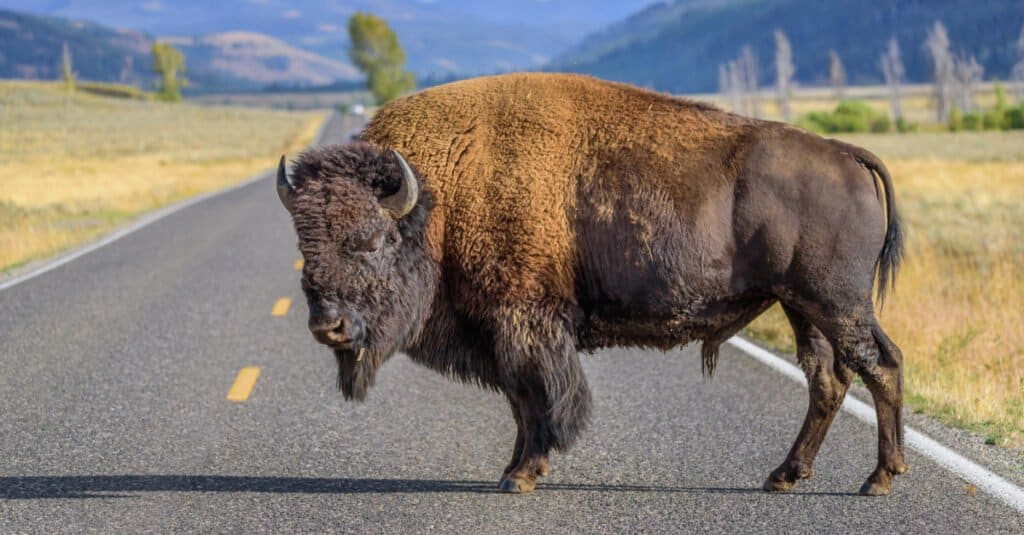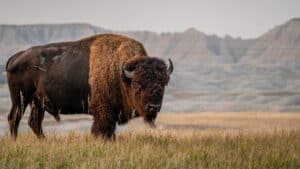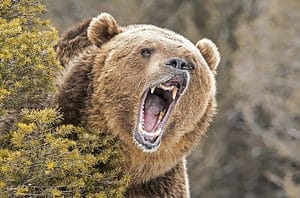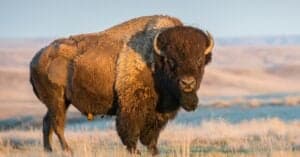Bison are the largest land mammal in North America. They can grow up to 2,500 pounds in weight and to a length of nine feet. They have a huge head, large horns, distinctive shaggy fur, and a shoulder hump. The mother and calf we see in this video live in the Yellowstone National Park, but bison are found in other national parks including Wind Cave National Park in South Dakota and The Henry Mountains in Utah. Also, wild herds are found in the Great Plains west of the Mississippi River and in the tall-grass plains east of the Rocky Mountains.
Even though bison are large animals, they have a number of predators. Humans, wolves, and cougars hunt bison, as well as bears, as we see in this video.
Bison Reproduction and Offspring

Female bison have live births after a gestation period of 285 days.
©iStock.com/IngerEriksen
The mama bison and her calf have attracted the attention of a grizzly bear who is stalking them. However, the bear appears to give up and wanders away by the end of the video. Bears are omnivores, as their diet consists of plants, insects, fish, small mammals, and larger animals. However, an adult buffalo would be a considerable challenge for a grizzly to overcome, so the target may have been the calf rather than the adult.
Female bison have live births after a gestation period of 285 days (the same as humans). Newborn buffalo weigh between 30 and 70 pounds. You may see baby bison referred to as “red dogs” because they have orange/red fur. The babies are fed by their mother’s milk but transition to vegetation as they learn how to graze. They stay with their mom for two or three years.
More About Bison
You can tell a lot about how a bison is feeling by looking at its tail – in this way they are similar to dogs. Typically, their tails hang loosely when they are feeling calm and stiffen when they are about to charge. Also, bison are very well equipped to stand up for themselves against bears. They may look like large and cumbersome animals but they can reach speeds of up to 35 miles per hour. They can also spin and jump, making it hard for bears to grab them. Perhaps most surprisingly, they are excellent swimmers!
Up Next…
- Discover Yellowstone’s “Alpha Wolf” that Could Take Down Elks Solo
- Watch a Bear Being Swept Over a Waterfall In Yellowstone
- Watch a Wolf Chase a Bear in Completely Normal Day in Alaska
The photo featured at the top of this post is © Tim Malek/Shutterstock.com
Thank you for reading! Have some feedback for us? Contact the AZ Animals editorial team.






